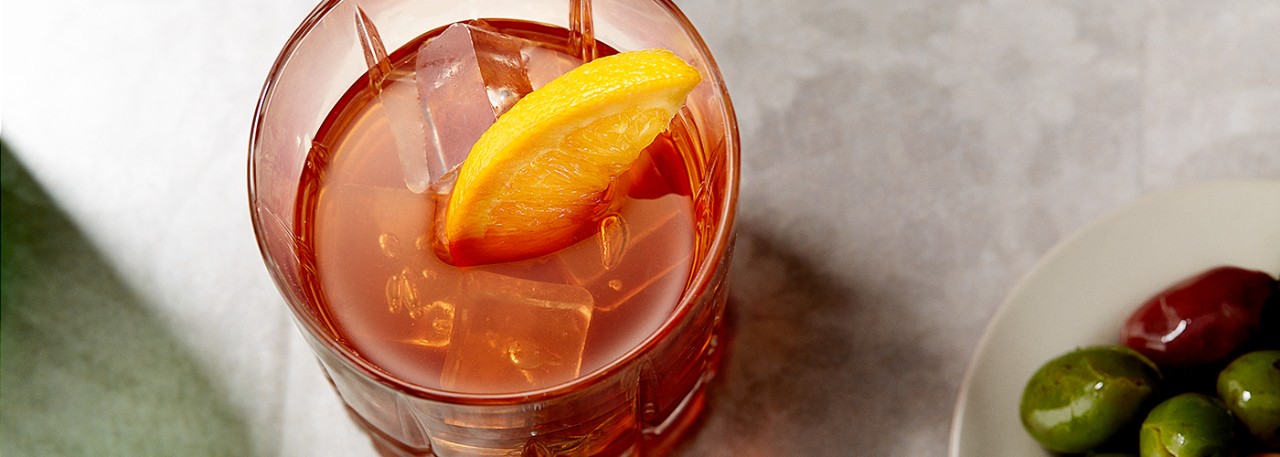.png.transform/rendition-xs/image_image%20(1).png)
Vermouth from the Vintner's Hand: Quality and Tradition
Spain's wine and vermouth cultures are, of course, inextricably linked and thus spread throughout the entire country. The actual diversity is based on the fact that numerous top bodegas now offer vermouth qualities of the highest level, the base wines of which naturally come from their own vineyards. The list seems almost endless, but it emphasises the artisanal and thus, of course, the extremely high-quality nature of the Spanish vermouth scene. Vermouth from top winemakers is not an exception in Spain, but a programme!
Local varieties as quality carrier
The fashion for vermouth aperitifs has exploded in Spain, to the point where renowned popes of national wine criticism are putting their names on extensive vermouth guides. As you can imagine, the variety of flavours and types is enormous, ranging from Galicia to Rioja, Navarre, Old Castile and down to the south. Spanish vermouth is almost exclusively prepared on the basis of local white wine varieties, and more and more wineries are identifying the grape varieties on their vermouth labels. Only occasionally are red grapes also mentioned. Since the east coast, with the small Catalan town of Reus as its centre, occupies a weighty place in Spanish production, Macabeo has a protagonist role there. Everywhere in Catalonia and especially in the not so fast-moving inland, such as the growing regions of Montsant or Priorat, the tradition had been preserved and is now gaining enormous momentum again. But other prestige varieties are also used for vermouth preparation, such as Albariño for Entroido Vermú Blanco by Bodegas Valmiñor or Verdejo for 61 Vermouth Verdejo by the Rueda giant Cuatro Rayas.
Fauna and wine style influence the character
Spain's landscape is considered the most diverse in Europe, and the country's herb fauna is correspondingly large. This alone explains the dizzying array of flavour profiles created by the maceration of these botanicals, as these ingredients in the form of herbs, roots, barks, spices and fruits are commonly called. In addition, the style of a winemaker or winery is determined by the type of base wine. In Málaga, Moscatel grapes are macerated and then blended with wines matured in old wooden casks. To top this off, in some cases they are then matured in old brandy barrels. In Jerez, but also in Málaga, world-renowned producers resort to oxidatively matured qualities when selecting the base wines, which come through in the taste picture. Vermouth from Cádiz can therefore have notes of Amontillado or Oloroso. Fernando de Castilla from Jerez stood out with a vermouth sherry cask on the basis of a matured Oloroso PX blend, and Bodegas Dimobe with their Ventura 27, which is of course characterised by Moscatel. So matured highly complex vermouths are also part of the Spanish vermouth universe.
Balance and smoothness - the profile of the classic Spanish vermouth style
Actually, vermouth or Spanish "vermut" is an aromatised wine spiked with alcohol. In many reference works, it is nevertheless referred to as a herbal spirit, as it is allowed to have up to 21.9 % by volume according to Brussels regulations. The Spanish variants of the historic aperitif drink, however, usually vary between 15 and 18 % by volume and are generally considered to be rather milder representatives that aim for balance and for this reason appear extraordinarily attractive. This is because the classic Spanish vermouth was made less bitter via the somewhat more moderate dosage of wormwood herb and therefore still often seems softer and perhaps a little sweeter than the prototypes from other producing countries. This style, which is fine in some ways but very intense in taste, has also given Spanish vermouth a stage again internationally.

